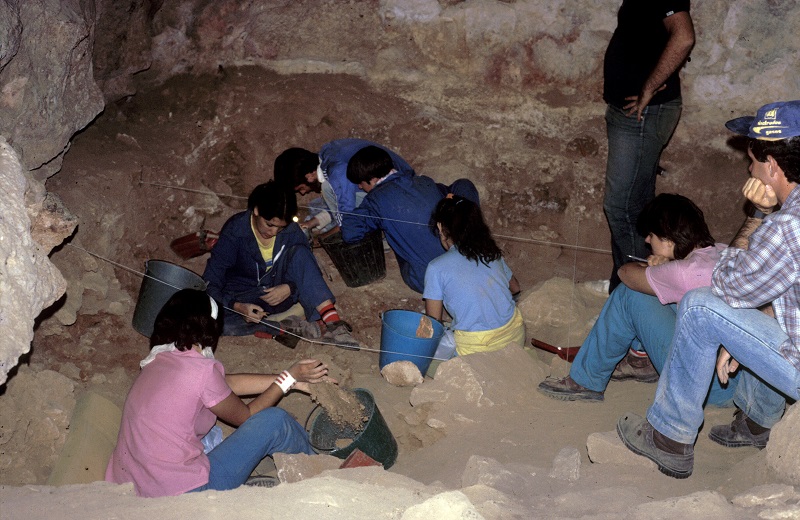Neanderthals seem to have been carnivores
A new study published on October 17, 2022, in the journal PNAS, led by a CNRS researcher, uses zinc isotope analysis for the first time to determine the place of Neanderthals in the food chain. The results obtained suggest that they would indeed have been carnivores.
Were Neanderthals carnivores? Scientists have not yet decided on the question. If certain studies of dental calculus of individuals coming from the Iberian peninsula could suggest that they were large consumers of plants, other research carried out on non-Iberian sites seemed rather indicate an almost exclusive consumption of meat.
Thanks to new analytical techniques applied to a molar from an individual of this species, researchers 1 have demonstrated that the Neanderthals at the Gabasa site in Spain seemed to be carnivores.
Until then, to try to define an individual’s place in the food chain, scientists generally had to extract proteins and analyze the isotopes of nitrogen present in the collagen of bones.
However, this method is often only applicable in temperate environments, and rarely on samples over 50,000 years old. When these conditions are not met, the analysis of nitrogen isotopes is very complex, if not impossible. This was particularly the case for the molar from the Gabasa site, studied here.
Faced with these constraints, Klervia Jaouen, a researcher at the CNRS, and her colleagues have this time analyzed the isotopic ratios of zinc contained in dental enamel, a mineral resistant to all forms of degradation. This is the first time this method has been used to try to identify the diet of a Neanderthal.
The lower the proportions of zinc isotopes in the bones, the more likely they are to belong to a carnivore.
This measurement was also carried out on animal bones from the same period and geographical area, both on carnivores such as the lynx or the wolf, and on herbivores such as the rabbit or the chamois. As a result, the Neanderthal to whom this Gabasa tooth belonged would have been carnivorous and did not consume the blood of its prey.
According to broken bones found at the site and isotopic data, this individual would also have eaten the bone marrow of its prey, without consuming the bones.
Other chemical tracers show that he was weaned before he was two years old. Analyzes also show that he would probably have died where he had lived as a child.
Compared to previous techniques, this new method, by analyzing zinc isotopes, makes it possible to better distinguish omnivores from carnivores.
The scientists hope to reproduce the experiment on other individuals, coming from other sites to confirm their conclusions, in particular on the Payre site where new research has begun.


Bibliography
A Neandertal dietary conundrum: new insights provided by tooth enamel Zn isotopes from Gabasa, Spain . Klervia Jaouen, Vanessa Villalba Mouco, Geoff M. Smith, Manuel Trost, Jennifer Leichliter, Tina Lüdecke, Pauline Méjean, Stéphanie Mandrou, Jérôme Chmeleff, Danaé Guiserix, Nicolas Bourgon, Fernanda Blasco, Jéssica Mendes Cardoso, Camille Duquenoy, Zineb Moubtahij, Domingo C. Salazar Garcia, Michael Richards, Thomas Tütken, Jean Jacques Hublin, Pilar Utrilla, and Lourdes Montes, PNAS , October 17, 2022. DOI: https://doi.org/10.1073/pnas.2109315119
